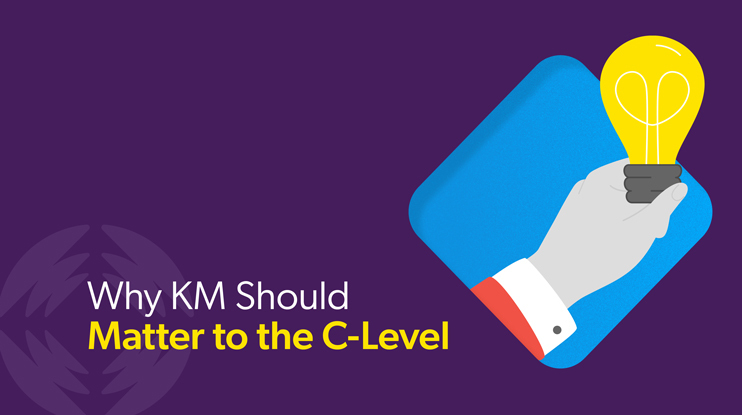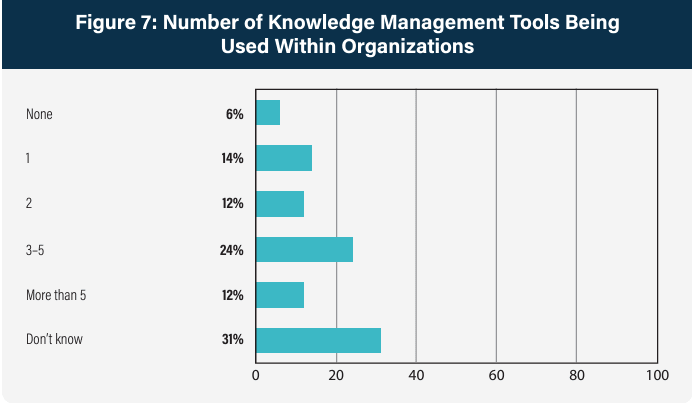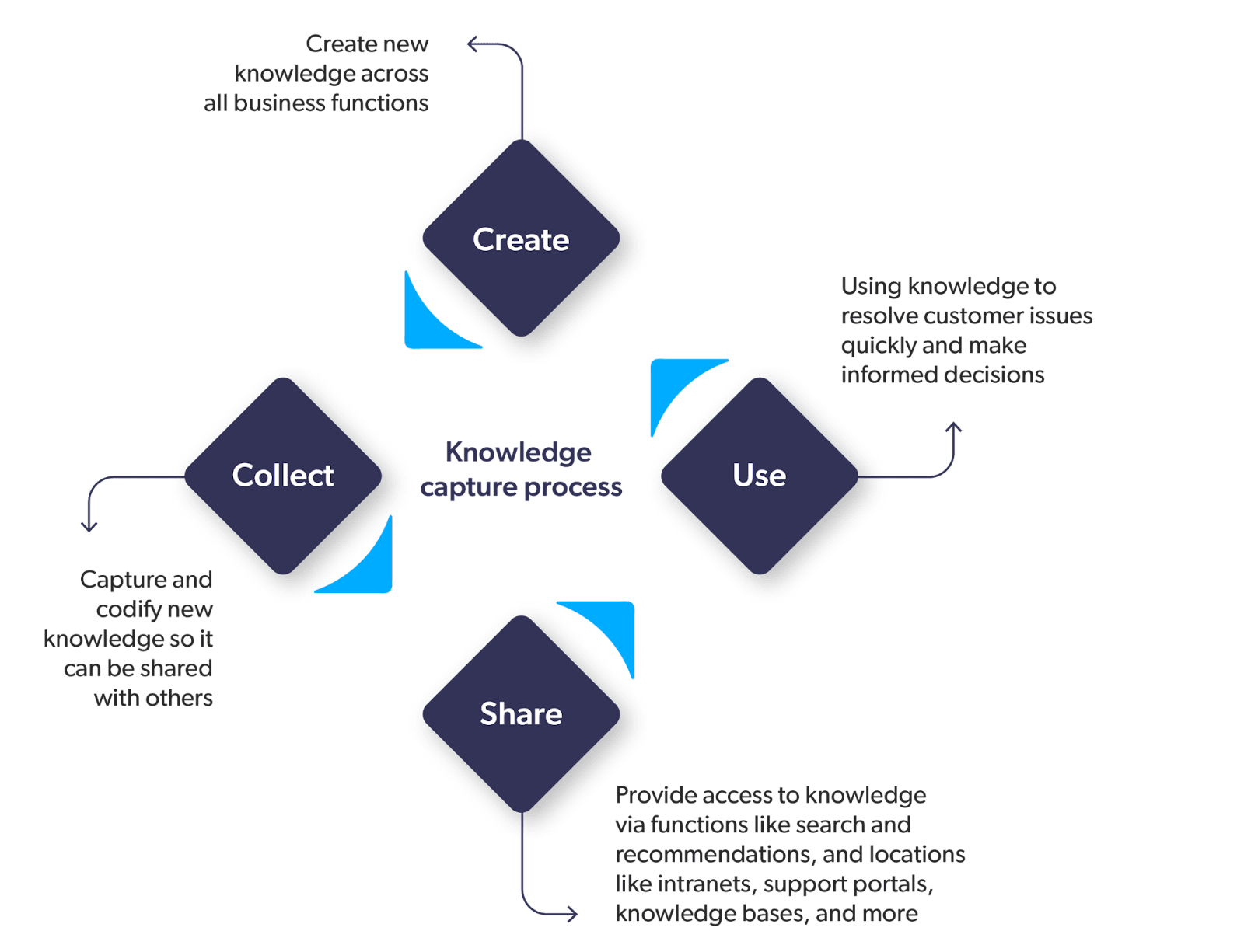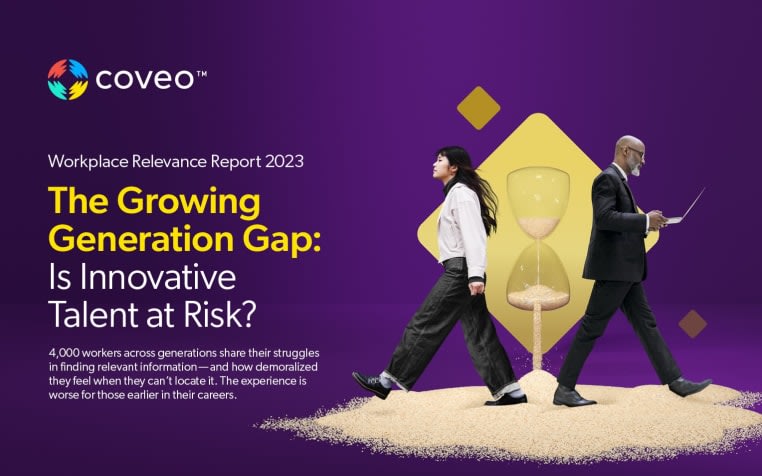If you’ve hired well, you likely have an untapped source of incredible value for your organization: knowledge. Yet, according to a survey of more than 300 knowledge management leaders and professionals, this valuable resource continues to be siloed in most organizations.
The survey found that 36% of managers have three or more knowledge management tools in use. Yet another 31% weren’t sure how many they had at all. Especially during economic uncertainty, knowledge management has the possibility to not only innovate but also help reduce operational costs. Plus, it’s key to implementing a strong generative AI strategy.
Does this sound like your enterprise?
But with all that knowledge and all those systems, the survey found that one of the biggest barriers to wider knowledge management adoption, is ‘resistant corporate cultures.’
While this can be seen as lackluster employee adoption, C-level leaders have failed to stress learning and curiosity — and knowledge sharing.
Here’s why that needs to change.
The Role of C-Level Executives in Knowledge Sharing
With companies becoming increasingly omnichannel, there’s more for leaders to do than ever before. C-levels are responsible for not only stock decisions, strategic planning, hiring and firing, and managing the managers, but they also have to shape the culture of how an organization handles knowledge.
As C-levels look for ways to do more with less, and considering the vast amounts of data built into the DNA of today’s organizations, it only makes sense that knowledge management focuses on unlocking that data and creating better ways to share it across all departments.
Their role as change agents and role models also requires C-level execs to try new solutions and staff departments with like-minded managers who can help them implement these data-driven tools.

Gartner predicts that 40% of today’s knowledge management systems will not meet strategic and operational standards by 2027. Why? Because they don’t include artificial intelligence (AI) and machine learning (ML) capabilities for surfacing information and turning it into a single source of knowledge.
C-level leaders must proactively implement the solutions to overcome these gaps. AI and ML aren’t optional. They can enhance executive decision-making necessary to grow an organization and help it weather difficult seasons. This technology also fuels innovation at scale, creating the competitive advantage needed in today’s market.
Importance of Knowledge Management for C-Level Executives
KM should be important to executives — not only so their staff can make better decisions, but so that they can too. What can you expect from implementing modern knowledge management tools and strategies?
Here are some immediate gains:
Executives get the right information at the right time to make the best decisions for the situation. Since technology changes so quickly, the right answer yesterday may not apply today. Knowledge management provides valuable data for better decision-making, but it helps C-level executives make these decisions in time to see better outcomes. They can quickly pivot as needed.
Strategic planning becomes more innovative. Ideas exist across all layers of an organization. But finding those ideas can take a long time, and it’s often not easy to figure out where that knowledge even exists. By bringing together stakeholders from all areas of the organization, new ideas become reality quicker and with a better idea of how they affect teams once implemented.
There’s less repetition. “Who knows the answer to this?” is a common question from C-level leaders today. With a documented and accessible knowledge base, they can easily identify the source of truth. There’s less risk of needlessly recreating technical documentation. Employees won’t overlap on duties. Frustrating meetings that serve no purpose but to share a small piece of information can be eliminated entirely. (And if C-levels identify a piece of knowledge that doesn’t yet exist, they can prioritize getting it for the benefit of the entire organization.)
Knowledge risk is minimized. There’s a lot of talk about the growth and profit benefits of knowledge, but what about the dangers of not using it appropriately? Knowledge management is just as much about minimizing access to knowledge that shouldn’t be shared and safeguarding data from getting into the wrong hands.
Likewise, when a C-level leader (or really any employee) leaves the organization, what happens to the knowledge they possess? Instead of losing it forever, it can be documented, shared with those who need it, and preserved for future workforces. Any ideas, processes, or inputs they brought to the job can remain after they are gone, thanks to good knowledge management practices.
It changes the culture. Organizational knowledge isn’t just useful for carrying out the day-to-day of a job; it’s intrinsically worthwhile. People who value knowledge are the best people to have on your teams. By prioritizing knowledge and speaking of it often, you can cultivate a culture that puts learning and curiosity first. As knowledge is gained, treasured, and treated like the asset it is, it will be naturally integrated into the fabric of the workplace. People will share best practices, document case notes better and offer help proactively across the organization. This is ultimately what a C-level wants to see, and it starts with them.
Implementing Knowledge Management Strategies
These ideals are all well and good, but how does one go about getting them accomplished? It starts with some soul-searching about the knowledge contained in your organization and what you can do to “unlock” it.
Then:
- Create a dedicated knowledge management task force (if you don’t already have one)
- Develop a mission for your task force and the work it will carry out
- Identify the most important knowledge your company has, what it needs, and the gaps between them
- Think of practical ways to create a “culture of knowledge”
- Discover tools for knowledge documentation and sharing, using data you already collect, if possible
- Bring in IT and legal to discuss how technology can assist
- Set goals for how you’ll know your strategy is working; measure and evaluate early and often
Surrounding yourself with an innovative team that’s not afraid of technology is essential at every point in the knowledge management journey. You’ll need to continuously monitor and make improvements as needed, and these team members can be crucial for identifying gaps in your operational processes. Don’t forget to include front-line workers (customer service agents, etc.) so that you get a complete picture of what’s required for your knowledge audit.
Consider how Manulife used Coveo’s AI-driven search to share information across the organization. Employees conducted 65,000 searches each month, with 70% of those guided by AI. Machine learning helped improve results to knowledge assets, resulting in an average 2.1 click rank score on those results. As employees found it easier to get the info they needed, they experienced less friction in their day-to-day workplace environment and were able to improve customer satisfaction.
Joining the Knowledge Revolution
The data your organization collects, shares, and stores can be unlocked in amazing ways. It’s one source of knowledge contained within your organization, but it’s often low-hanging fruit that just needs to be prioritized. What could you do if you used all the knowledge available to you?
This shift requires top-down buy-in, intentional planning, and infrastructure improvements to improve data and content sharing. And it needs leadership to take the first step. If you’ve decided it’s finally time to put knowledge management at the forefront of your growth plans, you’re in good company.
Most business leaders (89%) planned to keep their 2023 knowledge management budgets at or above what they’ve been in the past. Building a culture of knowledge sharing won’t happen automatically, but technology upgrades can help put your data to better use and make sure it’s available for those who need it. Contact us to get started with the right knowledge management tool for your needs.
Dig Deeper
We asked 4,000 Boomers, Gen Xers, Millennials and Gen Zs what they expect from their digital workplace experiences. Here’s what you need to know to keep them empowered, enabled — and less likely to quit.
A whopping 88% of employees feel demoralized when they can’t find the information they need to do their work. It’s even worse for younger workers. Read this report to learn how to better connect your workforce to boost employee productivity and satisfaction.





